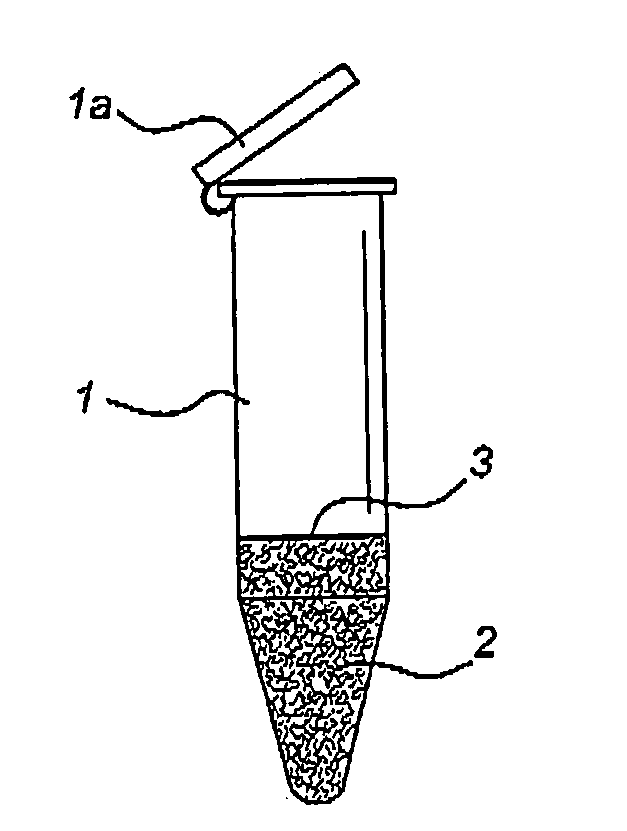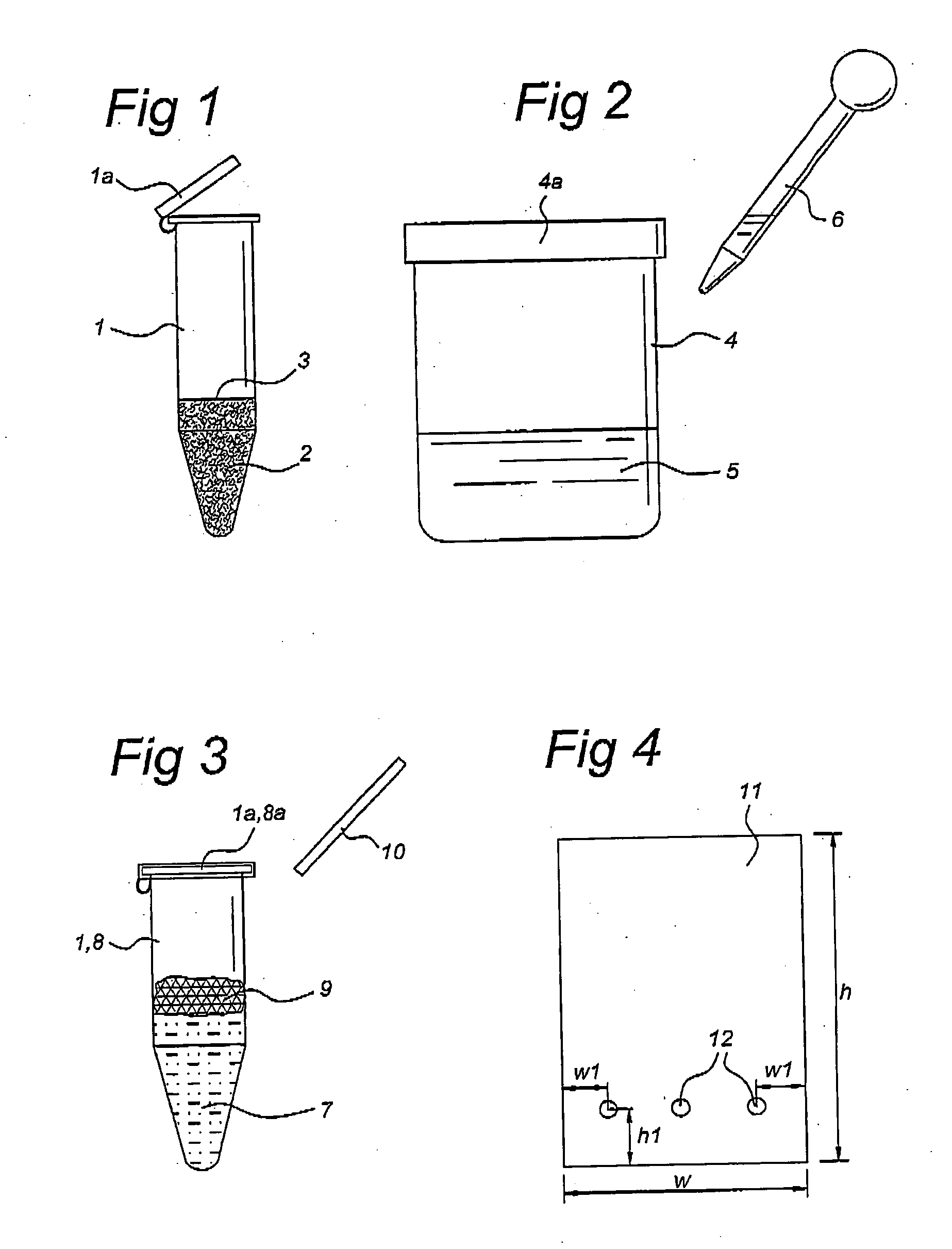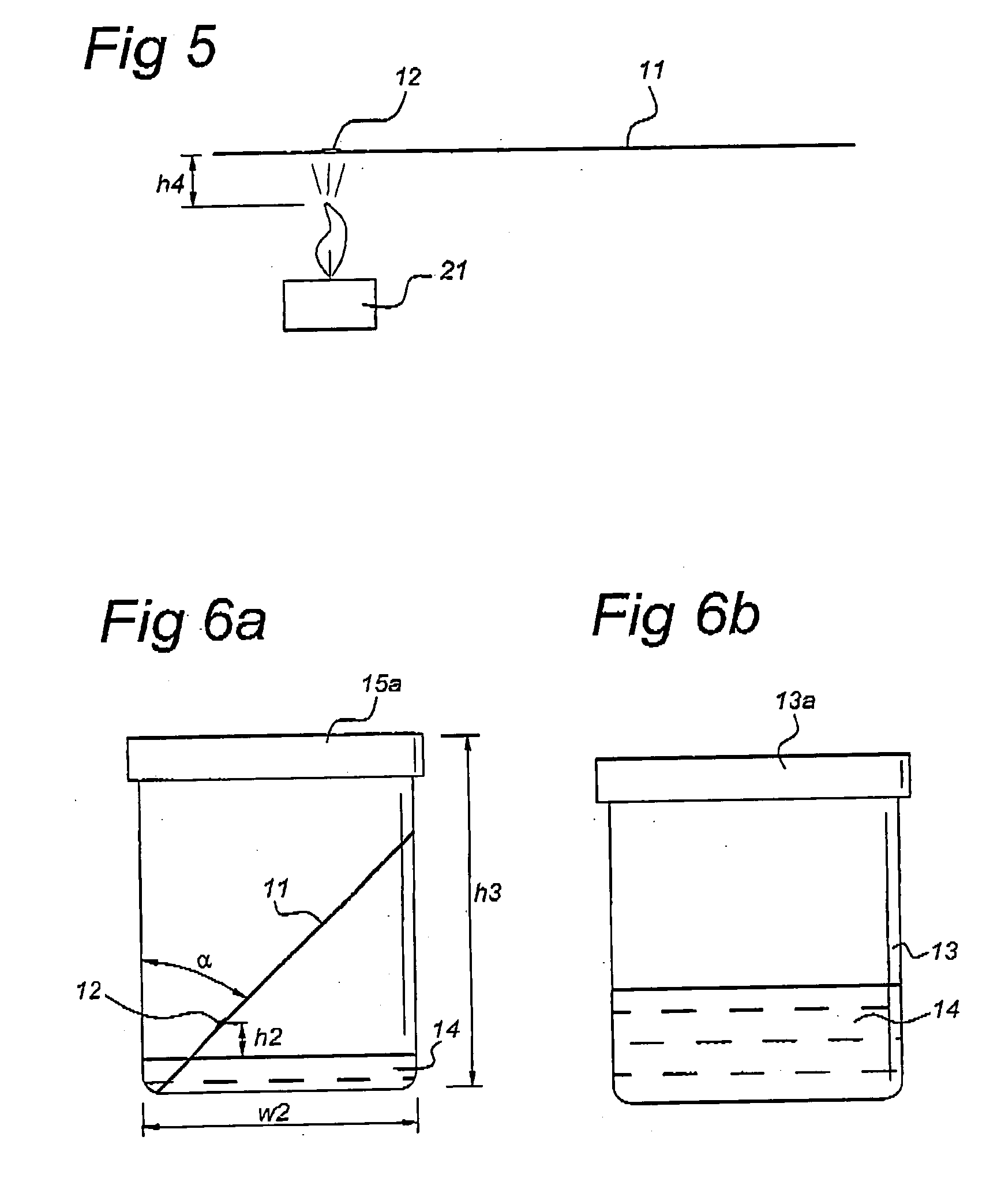Method for the detection of a cannabinoid, detection kit, and developing solvent
a detection kit and solvent technology, applied in the direction of material testing goods, immunoassays, component separation, etc., can solve the problems of requiring gc/ms, affecting the detection effect, and not being available to home users or pharmacies
- Summary
- Abstract
- Description
- Claims
- Application Information
AI Technical Summary
Benefits of technology
Problems solved by technology
Method used
Image
Examples
specific examples of embodiments
Embodiment 1
[0184] Referring to FIGS. 1-9, this embodiment describes in detail a way in which a fingerprint of the cannabis can be obtained.
[0185] Step 1: Weighing and Sampling
[0186] The cannabis (or hashish) are added to a cannabis sample container 1, in FIG. 1 an Eppendorf reaction tube, designed such that a predetermined amount can be added to the container 1. The container has a mark 3 for indicating a 100 mg (predetermined amount) cannabis sample 2.
[0187] In stead of using a container 1 designed such that a predetermined amount can be added to the container, a balance e.g. an analytical balance may be used.
[0188] Step 2: Adding Extraction Solvent
[0189] From an extraction solvent container 4 (with cover 4a) with another container 6 a predetermined amount of extraction solvent 5, in FIG. 2 a pipette, 1 ml (predetermined volume) extraction solvent 5 is added to the to the container 1 mentioned in step 1 (Eppendorf reaction tube). Of course, another container can be used, wh...
embodiment 2
[0208] This embodiments describes a way in which the amount of THC, and in a similar way of the other cannabinoid(s), in the cannabis can be determined.
[0209] In general, the same protocol is followed as described above in embodiment 1, but with a number of modifications: Step 1*: Weighing and Sampling
[0210] See step 1 above. Further, the sample must be heated. There are a number of convenient ways to do this. One of them may be incorporated into step 1, others may be incorporated into step 6. Below, the incorporation of heating for step 1 is described.
[0211] The sample may be placed on a little piece of aluminum foil or on a small dish or in a crucible, etc. and is heated for about 4 minutes at 150° C.
embodiment 3
[0212] Referring to FIG. 5, this embodiment describes alternative ways in which the amount of THC, and in a similar way of the other cannabinoid(s), in the cannabis can be determined.
[0213] Step 6*: Spotting on TLC Plate
[0214] See step 6 above. Further, the sample must be heated. Note that the heating of the sample will either be performed at step 1 (see embodiment 2) or after step 6 and before step 7, as described here.
[0215] After step 6, as described above, the TLC plate 11 can be heated. The same heating conditions as described above can be used, e.g. 4 minutes in an oven at 150° C. Alternatively, the TLC 11 plate may be carefully heated with a candle 21. Good results were obtained with a distance h4 of 3 cm and a heating time of 1½ minutes. Then, one can continue with developing the TLC plate 11, see above.
PUM
 Login to View More
Login to View More Abstract
Description
Claims
Application Information
 Login to View More
Login to View More - R&D
- Intellectual Property
- Life Sciences
- Materials
- Tech Scout
- Unparalleled Data Quality
- Higher Quality Content
- 60% Fewer Hallucinations
Browse by: Latest US Patents, China's latest patents, Technical Efficacy Thesaurus, Application Domain, Technology Topic, Popular Technical Reports.
© 2025 PatSnap. All rights reserved.Legal|Privacy policy|Modern Slavery Act Transparency Statement|Sitemap|About US| Contact US: help@patsnap.com



